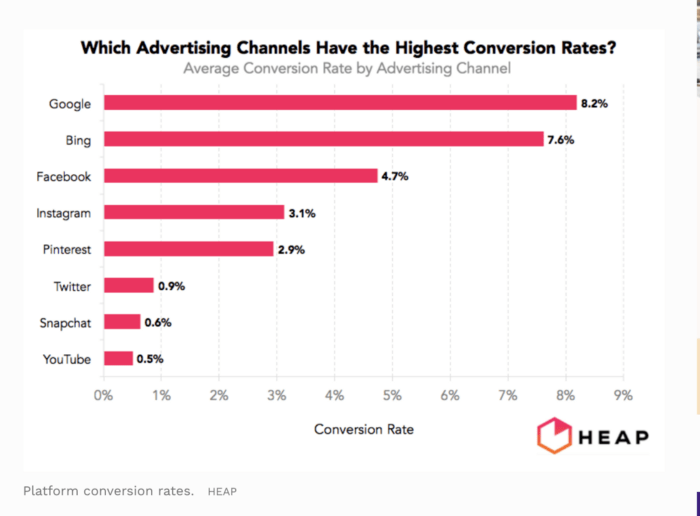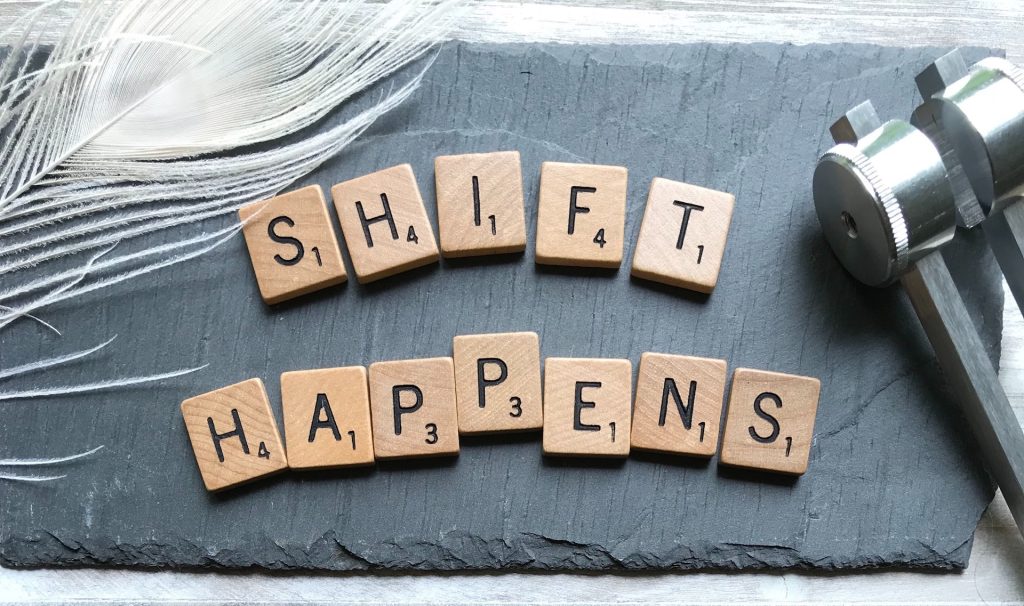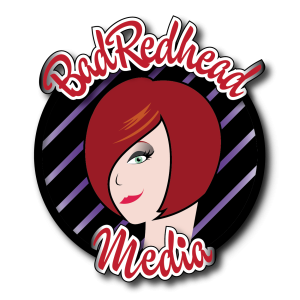How To Build Your Author Platform When You Have No Clue What That Means
What’s an author platform, anyway?
Let’s break it down!
When I first started in the publishing industry over ten years and seven books ago, the nebulous concept of an author platform sounded like a vague box of ‘things’ a writer would buy at the Invisible Writer Internet Store.
“Want the deluxe package?” an oily salesman with an extreme side part would ask. “I don’t know,” I would shrug. “How much does it cost?” I’d ask this snake-oil dude. He would smile, wryly, “That depends.”
Sound familiar? Still confusing. I know.
This is how a seasoned writer explained an author platform to me at the time that helped me make sense of it all:
Think of your author platform as a deck. Each tactic is a plank. Without a full deck, your platform isn’t solid. It’s flimsy. Building each plank will give you a solid foundation to work from when selling your book so nothing falls through.
This helped. A lot. And make no mistake: while you may tell yourself you’re allergic to marketing, don’t know what it is, or that it’s all ‘shameless self-promotion’ (it’s not if you’re doing it correctly), you DO want people to read your work, right?
You have a choice here: be the oily salesperson or be strategic about it. Time to stop covering up your eyes and ears and do the work. 

Let’s talk about all the planks. Well, at least the most important ones and why they matter, as well as how they impact your platform.
Social Media…
Social media appears to be the easiest plank. Open an account and start telling everyone about your book, right? Not so fast.
Writers get all excited about social media as a way to sell books. I’ve written pretty exhaustively on Medium as to how social media is great for building relationships with readers, so yes, use it! But, use it well. Use it correctly. Don’t use it just to ‘sell’ your books with constant spammy links.
Why? Well, organic social media, regardless of which channel, and even with paid advertising, is pretty ineffective at conversions (aka, converting from a post to an actual sale). Don’t take my word for it.
In research data from 37 million social media visits that led to 529,000 orders, some interesting data points emerged:
- Facebook dominates as a source of social traffic and sales. Nearly two-thirds of all social media visits to Shopify* stores come from Facebook. Plus, an average of 85% of all orders from social media come from Facebook.
- Also, noteworthy in this category is Instagram which is also generating higher average orders than those same sites. This is especially impressive considering the only clickable links on Instagram are those in profile bios or stories if over 10K followers.
- Facebook has the highest conversion rate for all social media eCommerce traffic at 1.85%. (Source: 440 Marketing Group)
This advertising graphic is also helpful. You may or may not be advertising on social media or search engines — regardless, it’s good info to know. (Source: Forbes)

Courtesy of Forbes. Graphic by HEAP.
Reread what I wrote above about the building relationships part. Social media is social. It’s not so great for outright selling (unless you’re already a household name). In fact, the conversion rate from “Buy my book!” post to actual purchase of said book is pretty low across the board. So, why bother with social media at all? Few amazing reasons:
- Connecting with readers — your reader demographic is on social media. This has been the case for over 15 years now, yet has become increasingly critical during the past 18 months with the pandemic.
- Brand awareness — we brand the author, not only the book. Read more about that here.
- Authenticity: readers want to know more about writers and what motivates us to write our stories. Share that.
- Site traffic: wherever you usually blog, whether that’s here on Medium, your own website, or a regular column elsewhere, social media is an amazing traffic driver, especially once you’ve developed that following.
Remember, though, it doesn’t happen automatically. You have to share your posts. Read below for my top insider tips on how to make that happen. How To Share Your Blog Posts For Maximum VisibilityWant more eyes on your posts? Here’s my quick-start guide!
- Search visibility: once you’ve done all that fun stuff above (and yea, it takes time, so start already), your name and your book titles are associated with your branding keywords and key phrases in Google, Bing, and other search engines.
- Fan service: once you’ve published more than one book, interacting with your readers can be amazing because you find out you actually have readers. You know your demographic better than just guessing who they might be.
(*Shopify data provided since Amazon doesn’t provide conversion data.)
I released my seventh book in September 2021, and my readers are celebrating and anxious (which thrills me to no end!). They are waiting to buy, review, and support me. Who doesn’t want that?
And what’s great about social media is you can never start early enough. Years before your book comes out. Remember, we’re branding you, the writer, not only your book. Start early, be genuine. This leads me to my next point…

Reviews
This plank trips up many first-time writers. What’s the best way to garner book reviews? This is pretty confusing when you first start out, and there are a lot of misconceptions out there about how it works.
Do you ask your friends and family? Other authors? Pay for reviews? Do a virtual blog tour? What IS a virtual blog tour, anyway, and will you sell books by doing one? Where can people leave reviews, anyway?
I could write an entire post just about the intricacies of reviews (and I will), however, I’ll start with emphasizing why social media is so important here.
Wait, with reviews? What? I know, that sounds like crazy talk. But it’s not. Remember, building relationships with readers, book bloggers, and other publishing industry folks is crucial as part of your platform foundation.
And here’s why: when you’re ready to start sharing your book with these folks (whether through beta readers, sending out ARCs, asking for blurbs, and yes, reviews), you already have a solid base of people to draw from.
There’s a marketing concept, coined by Ted Rubin, called RoR, aka Return on Relationship. This is what building up your relationships is all about. What does that mean?
“RoR (Return on Relationship) is the value accrued by a person or a brand due to nurturing a relationship. ROI (Return on Investment) is simple dollars and cents. RoR is the value (perceived and real) that will accrue over time through loyalty, recommendations, and sharing.”
— Ted Rubin (Source: TedRubin.com)
A few basic review facts to answer those questions I mentioned above:
- Friends and family can review your books but in reality, very few will actually bother when it comes down to it. Ask most established authors. Sorry, harsh but true.
- Most of your sales (particularly ebook) will come from Amazon, however, unless the reviewer has spent $50 or more in a calendar year (on anything), they will not be able to leave a review. Amazon implemented this rule about five years ago to combat spammers leaving fake reviews and creating false impressions.
- Goodreads and BookBub have emerged as great options for readers to leave reviews. The only drawback is that the book must be available for purchase OR preorder in order for you to create those accounts (print for Goodreads, ebook for BookBub).
- Many paid review sites are legit, IF, and only if, they promise to post a fair and honest review regardless of the rating. So, for example, you agree that if a site gives you a 2-star review, you’re okay for that to be published. If you’re not okay with that, steer clear. Or be willing to take that criticism and make your book better.
- Virtual book blog tours are great for SEO (search engine optimization) and visibility; not so great for sales, so manage your expectations. Bloggers are great for your exposure, particularly if you’re in a genre that lends itself to newer social media like #BookTok (TikTok), #Bookstagram (Instagram), and even #BookTube (YouTube) for the younger demographics, like YA, NA (New Adult), and Contemporary Romance.
- And don’t forget about Twitter chats, Twitter Spaces (the new audio option), and Clubhouse.
Unsure where to start? Here’s a list of sites to submit your book to, some require payment, some don’t. There are many, many more sites and publications as well. Do your homework.
Sale Pricing
Crucial plank. Regardless of how you publish (indie, hybrid, or traditional), putting your book on sale (or free) will affect your ranking positively, at least for the time your book is sale-priced.
This is critically important during your launch phase. For example, one client’s ebook is normally priced at $9.99. That’s on the high side for an ebook, however, she is traditionally published and the book genre is business, which tends to cost more.
For her sale, we chose a 99c price point for a one-week sale for three reasons:
- To increase her ranking,
- To make it more affordable and improve audience reach,
- To get her up to 50 reviews so her publisher could submit for a BookBub featured deal.
All of which happened, so yay!
A caution: while it’s tempting to want to ‘trade’ reviews with other writers, don’t feel obligated if someone comes at you with that. Amazon frowns on this tactic, and they do look for ‘connections’ between you and other authors (social media, guest blog posts, etc.) — it’s built into their algorithm and is against their guidelines. They will potentially ban you from leaving reviews and, quite possibly, from Amazon altogether.
Not worth the risk.
Newsletter
A more personalized plank. I mentioned the conversion rate of social media above is pretty dismal, yet it’s the easiest route for most writers. Open an account, start blasting links. Ineffective, yet we all see writers do it.
Tip: If all you’re seeing are spammy ‘buy my book’ links, chances are you’re following mostly writers, not readers.
Occasional links are fine. I’m not opposed. I do it myself, particularly for short-term sales and giveaways.
For effective email campaigns, that conversion rate can be anywhere from 18% to 30%. Some studies show as high as 40%! Again, this is for effective emails, with optimized headlines that draw in a reader. Again, takes work and time. (Source: Barilliance 2021)
In addition, email marketing reaches more people than Twitter and Facebook combined. ~ @Buffer
If you’re just starting out, create a free account with your pick of any of the newsletter companies out there: MailerLite, Mailchimp, ConstantContact, etc., and start asking readers of your articles here or on your own site to become subscribers. It’s a simple CTA (call to action) and if you don’t ask, you don’t receive.
You don’t have to start sending newsletters yet. The thought freaks out most writers who aren’t published yet. It’s okay. You’ll get there.
Start building. That’s the goal. You will have something to share. Read more about building newsletters and subscribers from Bakerview Consulting, my go-to expert. If you’re active on Twitter, you can now easily create a Revue newsletter. Read more here.
Blogging
Cannot stress enough the importance of this plank. Millions of books have been written on this topic, and I couldn’t possibly do justice with only a few paragraphs here, so I’ll be brief and give you the marketer’s view: blogging is pretty much a requirement for anyone wanting to establish an online presence.
You will show up in search engines, your site will be indexed, and readers will start to associate you with the keywords and keyphrases (aka, your branding) you want to be known for.
Blogging also keeps your writer muscles sharp, helps you meet deadlines, and helps you get into flow. Are you having a hard time focusing? Read my tips! They work.10 Easy Ways To Improve Your Focus Right NowFeeling scattered, writer friends? Here are tips you can use today!
Voilà! The Start of Your Author Platform
The deck example all starts to come together when you put these planks firmly into place. There are others, of course, yet these are the basics.
I think I’ve filled your head with enough for now. Each of these marketing tactics requires work, time, and perhaps, a bit of money. Mostly, though, this work requires openness to understanding that publishing isn’t just writing.
It’s a business.
Treat it like one.
Have you signed up for my newsletter yet?


Fabulous article! These steps will help a lot. Thanks for sharing.